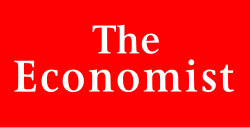
July 5, 2024
Which is the greatest rivalry in tennis? Older players might reminisce about the “fire and ice” contests between the cool-headed Bjorn Borg and the tempestuous John McEnroe; those a generation younger might rave about the all-American duels between Andre Agassi and Pete Sampras. After a two-decade-long era dominated by rivalries between Roger Federer, Rafael Nadal and Novak Djokovic, younger players are at last starting to shine. Carlos Alcaraz and Jannik Sinner, aged just 21 and 22, respectively, produce electric tennis—and have claimed four grand-slam titles between them since 2022. Do not be surprised if they meet again at Wimbledon, which started on July 1st.

iStock-1450675152
Yet these matchups look tame in comparison with the all-out war being waged between recreational players of tennis and those of pickleball—a sport that has gained widespread popularity in recent years, and which can be played on the same surface. In 2022 police in San Diego, California, had to be called to mediate a dispute when some pickleballers staged a takeover of a local tennis club. In Arlington, Virginia, a group called “Team Pickle-nah” leafleted the area around tennis courts due to be converted into pickleball ones, accusing pickleballers of hijacking courts, bullying children and urinating in public.
The source of the dispute is a familiar one to economists: the allocation of a scarce resource. Pickleball is a hotch-potch of other racket sports. It was invented, or so the story goes, when a group of Seattleites wanted to play a game on an old badminton court, but could find only table-tennis bats and a perforated whiffle ball to knock about. They made do. The result was a sport that is a sort of tennis “lite”—it requires less power, less running and is much easier to pick up. It has gained legions of fans since the covid-19 pandemic, especially among those over the age of 55. America now has 14m pickleball players, triple the number in 2020 and not far short of the 24m tennis players. In the absence of dedicated facilities, many pickleballers have taken to bringing nets and stickers to play on public tennis courts.
It is not just the study of scarce resources that might make the pickleball-tennis rivalry noteworthy to economists. It is also the nature of how the two sports interact. Basic economics teaches students about substitute and complementary goods. Substitutes are goods that can be replaced by one another—think Coca-Cola and Pepsi. Rising demand for one will lead to falling demand for the other. Complements are the opposite. Rising demand for one stimulates demand for the other—think booze and painkillers.
It is easy to see why the two sports appear to be substitutes. Public-court space is limited. There are private clubs for tennis and pickleball, but using them can quickly become expensive. As pickleball has added more than 9m players since 2020, the number of tennis players has also shot up. Growth in facilities has not kept pace. Skirmishes are prompted by various etiquette disputes, too. Noise complaints about the loud thwacking of pickleballs are common. In America public tennis courts often dictate that a court should be used for no more than an hour if there are players waiting. But setting up to play pickleball takes time. And should eight pickleballers not be allowed to use a court for longer than the four, at most, who can play tennis on the same patch?
In the long run, however, the impact of pickleball on tennis might be rosier. There is even an argument that, rather than acting as substitutes, the two sports may end up complementary.
First, it is hard to imagine there has ever been a time in which local authorities have been keener on the provision of asphalt surfaces. Muriel Bowser, mayor of Washington, dc, went to play pickleball in March last year, having committed $750,000 in a recent budget to the sport. City commissioners in Fort Pierce, Florida, a city nestled on the state’s Treasure Coast, were asked to step in to mediate a homeowners-association disagreement over the building of five courts in a gated community. They sat through a four-and-a-half-hour hearing attended by more than 80 people. Some of this energy will result in the conversion of tennis courts. But what is really apparent is a rise in demand for hard-court spaces on which to play both sports. If provision keeps up, it will result in more suitable surfaces for both sports.
Second, consider that the act of playing either sport is probably a complement to the other. Tennis is both hard to learn and athletically demanding. Pickleball is easier for children and the elderly to pick up. As a consequence, it could easily become something of a gateway racket sport—one that encourages children to graduate to tennis once they have a little more muscle and hand-eye co-ordination. A rise in the demand for pickleball might result in a rise in the demand for tennis, too. And this process might later work in reverse. Lifelong tennis players, who find the sport too demanding as they age, might enjoy switching to pickleball.
Up in rackets
There is a parallel with what happened to skiing after the invention of snowboarding in the mid-1960s. The rival sport fast became popular. At first, there was a backlash. Skiers were disinclined to accept baggy-trousered, young interlopers taking up space on their pristine slopes. Many resorts banned snowboarders, forcing them into dangerous backslopes. Yet in time their existence emerged as a boon for the resorts that did allow them in. They used the extra revenues to invest in expansion, new lifts and slope-grooming technology. This made both sports more appealing, inducing even more demand. The sports turned out to be complements and today only three American resorts maintain snowboarding bans. Having more winter-sport enthusiasts was good for winter sports. Despite the squabble, having more racket-sport players is probably good for racket sports, too. ■


